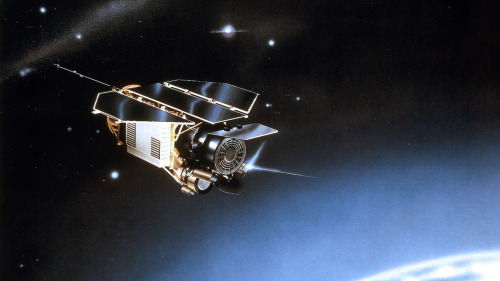
BERLIN (AP) _ Scientists were trying to establish how and where a defunct German research satellite returned to the Earth Sunday, after warning that some parts might survive re-entry and crash at up to 280 mph (450 kph).
There was no immediate solid evidence to determine above which continent or country the ROSAT scientific research satellite entered the atmosphere, said Andreas Schuetz, spokesman for the German Aerospace Center.
Most parts of the minivan-sized satellite were expected to burn up, but up to 30 fragments weighing a total of 1.87 tons (1.7 metric tons) could crash.
Scientists were no longer able to communicate with the dead satellite and it must have traveled about 12,500 miles (20,000 kilometers) in the final 30 minutes before entering the atmosphere, Schuetz said.
Experts were waiting for ``observations from around the world,'' he added.
Scientists said hours before the re-entry into the atmosphere that the satellite was not expected to hit over Europe, Africa or Australia. According to a precalculated path it could have been above Asia, possibly China, at the time of its re-entry, but Schuetz said he could not confirm that.
The 2.69-ton (2.4 metric ton) scientific ROSAT satellite was launched in 1990 and retired in 1999 after being used for research on black holes and neutron stars and performing the first all-sky survey of X-ray sources with an imaging telescope.
The largest single fragment of ROSAT that could hit into the earth is the telescope's heat-resistant mirror.
During its mission, the satellite orbited about 370 miles (600 kilometers) above the Earth's surface, but since its decommissioning it has lost altitude, circling at a distance of only 205 miles (330 kilometers) above ground in June for example, the agency said.
Even in the last days, the satellite still circled the planet every 90 minutes, making it hard to predict where on Earth it would eventually come down.
A dead NASA satellite fell into the southern Pacific Ocean last month, causing no damage, despite fears it would hit a populated area and cause damage or kill people.
Experts believe about two dozen metal pieces from the bus-sized satellite fell over a 500-mile (800 kilometer) span.
The German space agency puts the odds of somebody somewhere on Earth being hurt by its satellite at one in 2,000 _ a slightly higher level of risk than was calculated for the NASA satellite. But any one individual's odds of being struck are one in 14 trillion, given there are 7 billion people on the planet.


![[KH Explains] No more 'Michael' at Kakao Games](http://res.heraldm.com/phpwas/restmb_idxmake.php?idx=645&simg=/content/image/2024/04/28/20240428050183_0.jpg&u=20240428180321)


